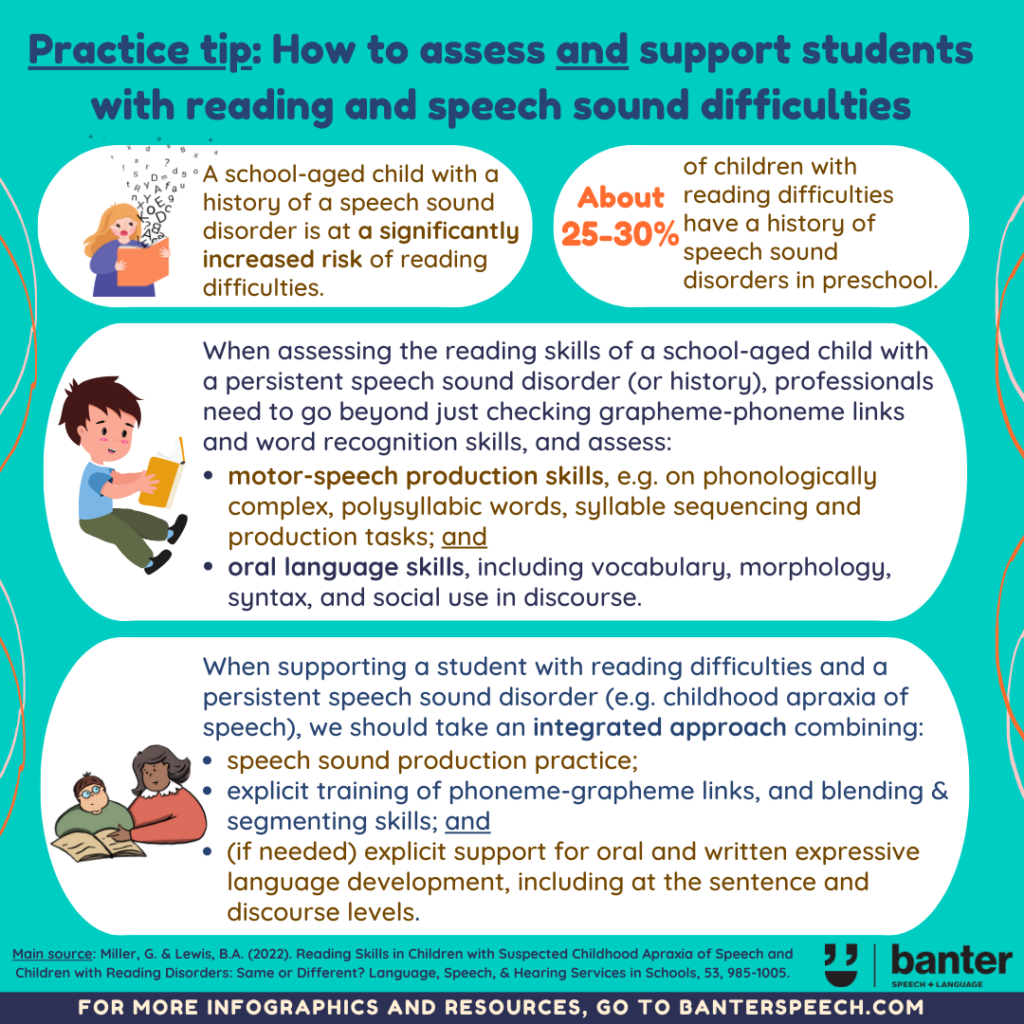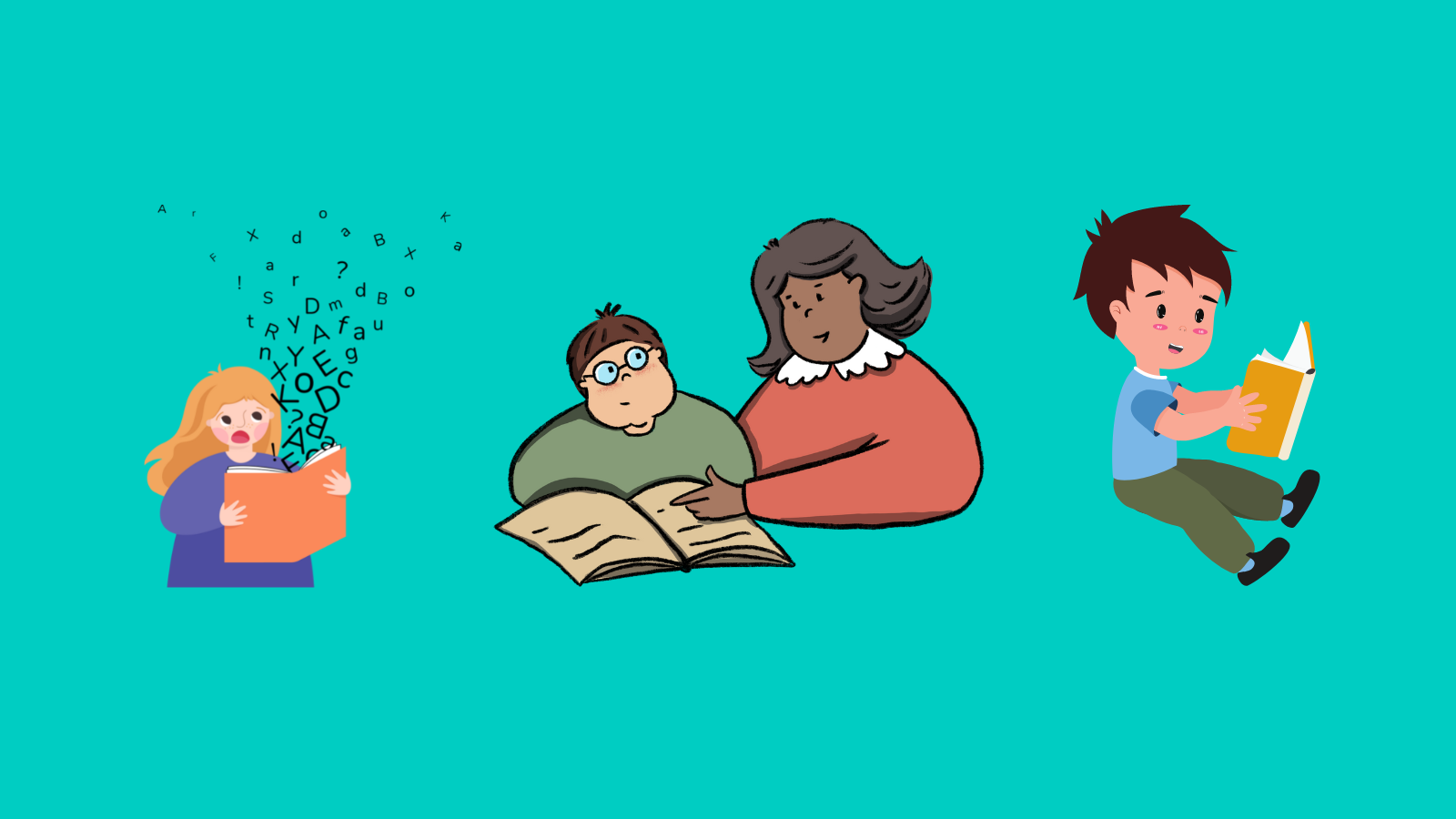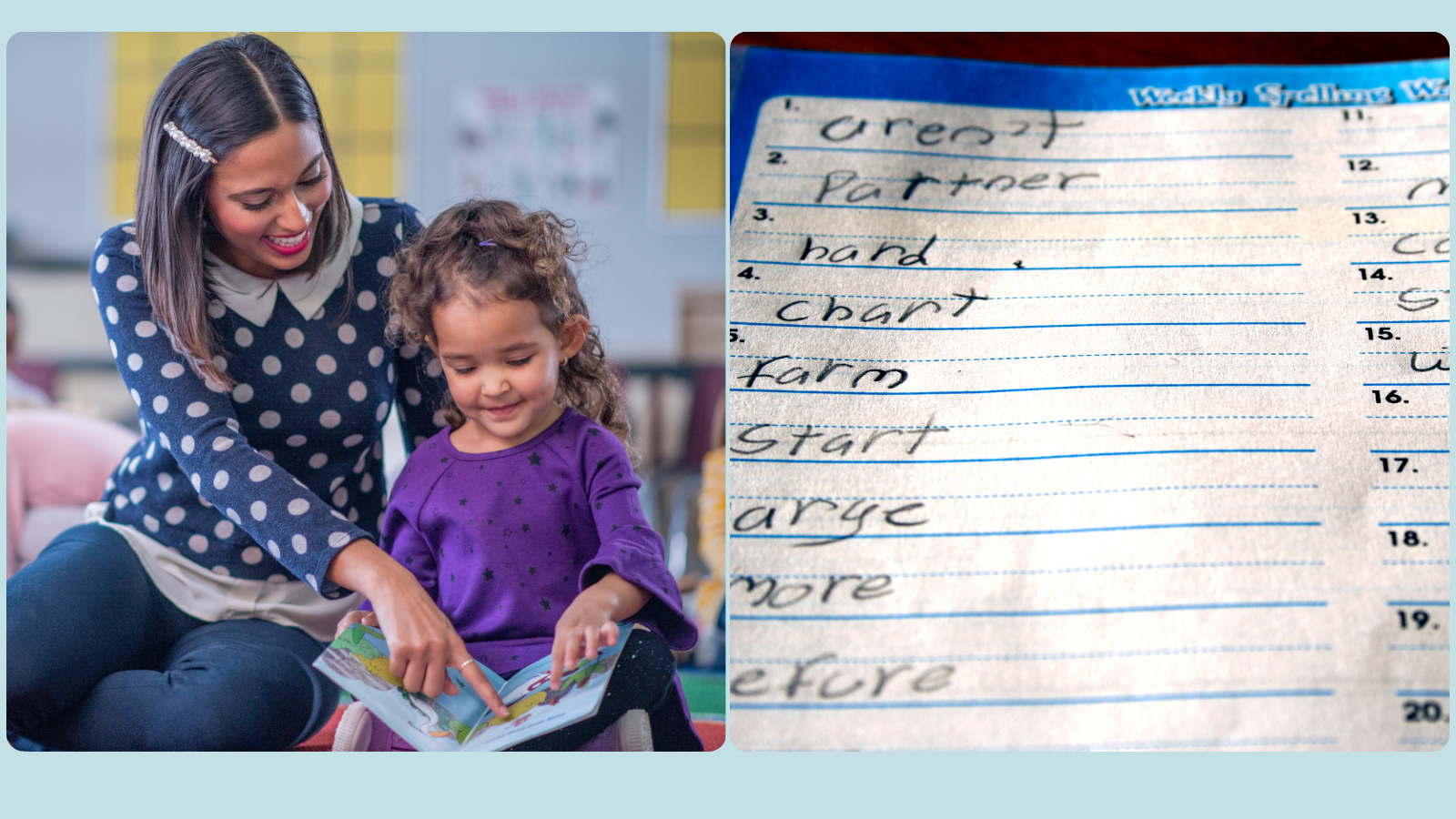Practice Tip: How to assess and support students with reading and speech sound difficulties
A school-aged child with a history of a speech sound disorder is at a significantly increased risk of reading difficulties.
About 25-30% of children with reading difficulties have a history of speech sound disorder in preschool.
When assessing the reading skills of a school-aged child with a persistent speech sound disorder (or history), professionals need to go beyond just checking grapheme-phoneme links and word recognition skills, and assess:
- motor-speech production skills, e.g. on phonologically complex, polysyllabic words, syllable sequencing and production tasks; and
- oral language skills, including vocabulary, morphology, syntax, and social use in discourse.
When supporting a student with reading difficulties and a persistent speech sound disorder (e.g. childhood apraxia of speech), we should take an integrated approach combining:
- speech sound production practice;
- explicit training of phoneme-grapheme links, & blending & segmenting skills; and
- (if needed) explicit support for oral and written expressive language development, including at the sentence and discourse levels.
Main source: Miller, G. & Lewis, B.A. (2022). Reading Skills in Children with Suspected Childhood Apraxia of Speech and Children with Reading Disorders: Same or Different? Language, Speech, & Hearing Services in Schools, 53, 985-1005.

Related articles:
- Why preschoolers with unclear speech are at risk of later reading problems: red flags to seek help
- For beginning readers, where should we start teaching? Phonics, sight words, or both?
- 12 tactics we use to help beginning readers learn to read, with examples of exactly what we do in practice to help at-risk students

Hi there, I’m David Kinnane.
Principal Speech Pathologist, Banter Speech & Language
Our talented team of certified practising speech pathologists provide unhurried, personalised and evidence-based speech pathology care to children and adults in the Inner West of Sydney and beyond, both in our clinic and via telehealth.








